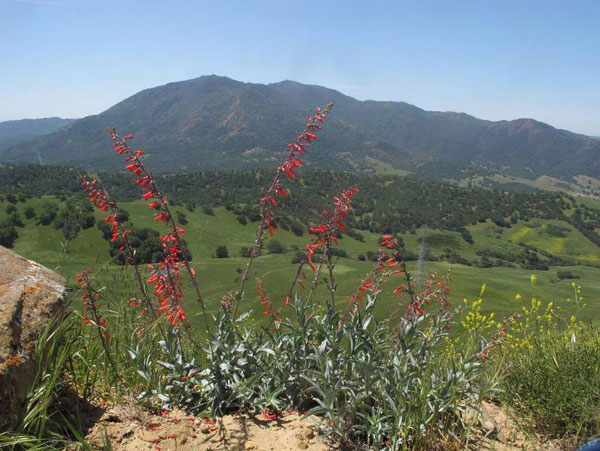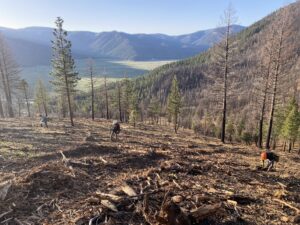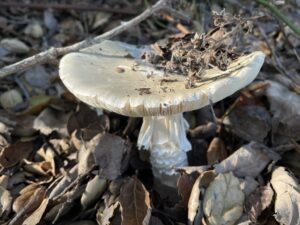Growing up in Ventura County, botanist Heath Bartosh, co-founder of the Bay Area ecological consulting firm Nomad Ecology, gained an early appreciation for the rich botanical wealth of the Golden State. We caught up with one of the California Native Plant Society’s top rare plant experts as he leads efforts to find, identify, catalog, and preserve our endangered flora on nearby Mount Diablo and in the Tehachapis further afield.
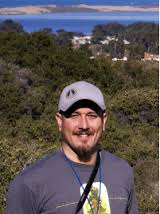
I grew up in Ventura County and got a BS at Humboldt State in Natural Resources Planning. My coursework in soils chemistry, botany, and CEQA [California Environmental Quality Act] requirements set the framework for what I do as a professional botanist. After leaving Humboldt I went home to regroup, then came up to the Bay Area to Clayton where my aunt lives, figuring the environmental job market was better here than in my hometown. During summers in high school I’d come up to Contra Costa County to stay with my aunt and uncle: I felt at home in CoCo County. Mount Diablo has been a part of that comfort zone since then. Plus, I was chasing a girl (my future wife), a former Humboldt grad who was getting her teaching credential at San Francisco State at the time. Living in Clayton made it easier for me to see her.
How’s the wildflower season looking this year? Given the record drought, is it a bad year? Good year? Or around normal?
On the whole, the wildflower season has been pretty good; it’s been an interesting year. The suppression of non-native grasses due to the drought have given an advantage to some of the good guys like California poppies, wind poppies, and clarkias. I’ve been out in Solano County recently and there’s a little plant called vinegar weed that’s coming up early – it germinated with the December rains. This native yellow wildflower generally doesn’t appear until after May and won’t flower until summer.
But on the other hand, native clovers have been almost non-existent. Clover diversity is usually really high (we normally see 5-6 species growing together), but not this year.
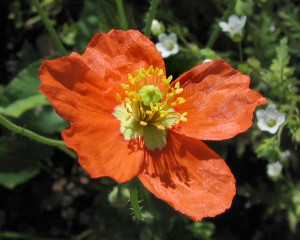
How do you account for the wide variation in how plants are responding to the drought conditions?
We have approximately 6,500 native plants in California, and each has its own life strategy. Some Bay Area plants came here via a Mojave Desert migration. The Northern California-based species have a totally different relationship with rainfall than their southern counterparts – they’re less adaptive to dry conditions, so we’ll see greater fluctuations. By contrast, the southern Californian species we have living here are more drought-tolerant and have been responding well to the dry conditions.
How much longer will the displays we’re seeing now last?
A big part of the flower show isn’t going to happen until mid-May. The fire followers on Mount Diablo aren’t going to get going until then: The staggered rain events we had this spring triggered fire-follower germination at different times on Mount Diablo, pushing the blooming period into mid- and even late summer.
In your research on Mt. Diablo’s post-fire recovery, what are some of your most compelling observations to date? Which “fire-following” blooms are doing particularly well and which not so well?
The Mount Diablo phacelia is a rare plant – before, I’d seen it only rarely, in rocky places. But post-fire, we’re seeing it everywhere around the burn area. Brewer’s redmaids haven’t been collected since the 1930s, but they’re back; it’s super-exciting to see these plants on the mountain.
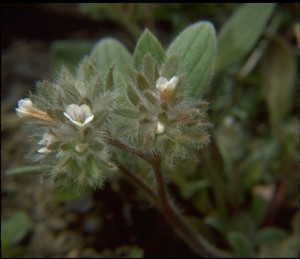
Tell us about your work further afield, in the California Coast ranges.
We’re collecting the “voids” – the under-botanized areas — in both the North and South Coast ranges. What plants live in the Mendocino National Forest to the north or on the Carrizo Plain east of San Luis Obispo? We’re conducting our research on lands that are difficult to access without special permission. I’m also working on the flora of Solano County, which is actually the home county of Willis Jepson.
The “Jepson” of Jepson Manual fame?
Yes. He received his botany degree at UC Berkeley in the late 1800s and endowed his own herbarium separate from the university’s collections . The Jepson Manual is the definitive and most up-to-date native plant manual, with over 1,000 pages listing all the plants in California. You can also go online to the Consortium of California Herbaria to see where the plants are or where they’ve been collected.
And the Jepson Herbarium at UC Berkeley is a library for collections of plant species. When we “collect”, we put a living plant specimen in a press to preserve it. We have collections dating back from John Muir and from William Brewer’s work for the Geological Survey of California in the 1860s. Just about every summit Brewer reached, he was describing new plant species!
In your bio you mention collecting plants for herbaria. How do you decide how much “collecting” is OK? Is there an ethics guide for the discipline?
Unless you’re a trained botanist, you shouldn’t be collecting without supervision. At the same time, there aren’t as many people collecting as there used to be. Some of the best botanists I’ve known are amateur or self-trained, and these folks should be collecting for herbaria. It’s the best way to document what species are growing in a particular place. Citizen-science activities – like those conducted by the 10,000 member California Native Plant Society — are very important for the survival of our native species. It’s a great way for people to contribute: If they make the proper identifications, that data can be useful, whether it’s by collecting a specimen and depositing it in an herbarium, or purely observational.
And plant species are great indicators of climate change. By having the public keep an eye on things, we can note what plants do and where they move. Due to climate change, some of our natives are in danger of climbing themselves out of existence to avoid the heat.
What’s your favorite area locally to hike and explore wildflowers?
My favorite area is the burned area on Mt. Diablo right now, at least until June or July. And Black Diamond Mines Regional Preserve in the East Bay has great manzanitas in winter and wildflowers in the spring.
More Info:
>> Read more about Heath’s research on Mt. Diablo’s “fire-followers” (Baynature.org article by Joan Hamilton)
Citizen Science:
>> Find native plant workshops and trainings at the California Native Plant Society’s website, CNPS.org.
>> Go on a CNPS Rare Plant Treasure Hunt!
>> Post your Wildflower Pics: We’re asking for your help tracking wildflowers in light of this year’s record drought. Please send pix to flowers@baynature.org and we’ll post them to our wildflower page!

